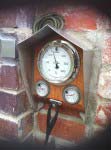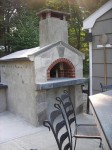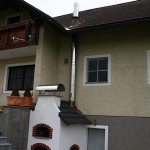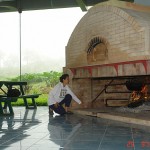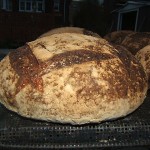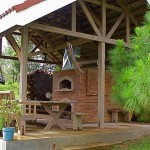back to board Main Page
Re: Kiln bricks
From the WFO board
Posted by Rado
In Reply to: Re: Kiln bricks posted by Garry
Hi Garry and Simon,
Yes I agree with you. Potters use also glazes with higher lead content and these can not be used for tableware. I can ask about the lead percentage, I know they have safety regulations. In later firing stages of led based glazes the studio has to be well ventilated to avoid breathing fumes. Glazes shouldn't get in contact with kiln walls, or when they do or when the glaze is over fired it leaks down and it destroys the pot, kiln shelves, or heating element and it would sticks to the brick wall too. When this happens it needs to be knocked off when cold. At times potters create beautiful looking glazes by introducing salt to the kiln when firing temperature is very high, it must be wood fired or gas kiln because the salt sticks to walls everywhere.
Normally they set aside one kiln used only for this type of glazing; the practice produces dangerous fumes which can not be inhaled. I will find out more details about whether lead glazes contaminate firebricks permanently. Most importantly kilns are built mostly of insulating light weight firebricks. r
--
PS We will be installing new forum with few other programs for the w/site. Jon is rewriting scripts to suit one database. This vintage system made the main page huge. Thanks everyone for patience.
- Re: Kiln bricks - Simon
- Re: Kiln bricks - Garry
- Re: Kiln bricks - Rado
- Re: Kiln bricks - simonedmonds@hotmail.com
- Re: Kiln bricks - simonedmonds@hotmail.com
- Re: Kiln bricks - Rado

Jamie and Katrina's brick oven with temperature gauge, in Victoria.
Concrete blocks used for the oven’s outer walls. By Joe in Connecticut USA
Wood fired family oven and chimney project by Robert in Austria
My oven with fireplace, cook food and heat water, by Joel in Philippines
Baking sourdough breads in quantity in Canada
Pizza oven and hut built by Tony in Philippines
